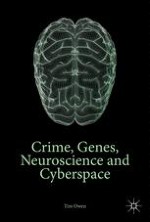2017 | OriginalPaper | Buchkapitel
4. Do We Need a ‘Virtual Criminology’?
verfasst von : Tim Owen
Erschienen in: Crime, Genes, Neuroscience and Cyberspace
Verlag: Palgrave Macmillan UK
Aktivieren Sie unsere intelligente Suche, um passende Fachinhalte oder Patente zu finden.
Wählen Sie Textabschnitte aus um mit Künstlicher Intelligenz passenden Patente zu finden. powered by
Markieren Sie Textabschnitte, um KI-gestützt weitere passende Inhalte zu finden. powered by
